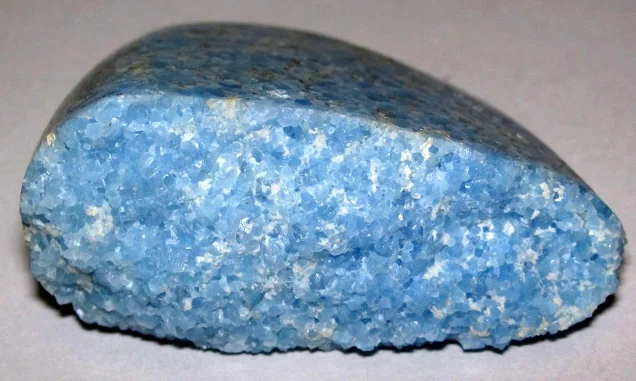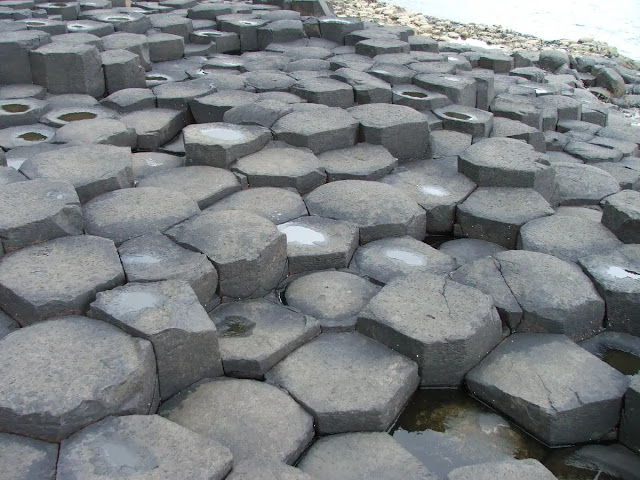Blue Skarn - Metamorphic Rocks
Skarn is a type of metamorphic rock that forms when hot, chemically-active fluids interact with carbonate rocks, such as limestone or dolomite. The fluids typically come from an igneous intrusion, such as a magma chamber or a vein.
Skarns are hard, coarse-grained metamorphic rocks that form by a process called metasomatism.
Skarns tend to be rich in calcium-magnesium-iron-manganese-aluminium silicate minerals, which are also referred to as calc-silicate minerals. These minerals form as a result of alteration which occurs when hydrothermal fluids interact with a protolith of either igneous or sedimentary origin.
A skarn-type mineralogy may be formed during regional or contact metamorphism and from a variety of metasomatic processes involving a great variety of fluids. A skarn is formed by a variety of metasomatic processes during metamorphism between two adjacent lithologic units. Skarn can form in almost any lithology type such as shale, granite and basalt but the majority of skarns are found in lithology containing a limestone or a dolomite.
 |
| Blue diopsidite skarn. Photo: James St. John |
The attractive rock shown here is a rare variety of skarn dominated by bluish-colored diopside pyroxene (“violane” or “violan”) (Ca,Mg,Fe)₂Si₂O₆). Violane is a coarse violet to light blue, manganese-rich variety of Diopside. Such rocks are called diopsidite skarn.
Diopside is a pyroxene made of calcium, magnesium, and silicon – diopside commonly forms in skarns because the mineral dolomite can supply the calcium and magnesium while the igneous rock will supply silicon.
This rock comes from a location in eastern Siberia known for the incredible blue color. The rock is a skarn, the term for a type of metamorphic rock commonly found when a magma chamber forms next to a limestone deposit. The edge of the limestone is heated, recrystallized, and often altered chemically by fluids coming off the magma.
Locality: Dovyren Highlands, Buryatia Republic, Transbaikalia, eastern Siberia, Russia
See also:
Chrysanthemum Stone: Natural Flower Stone
What is Maw-sit-sit?
Green Obsidian



%20(1).webp)




